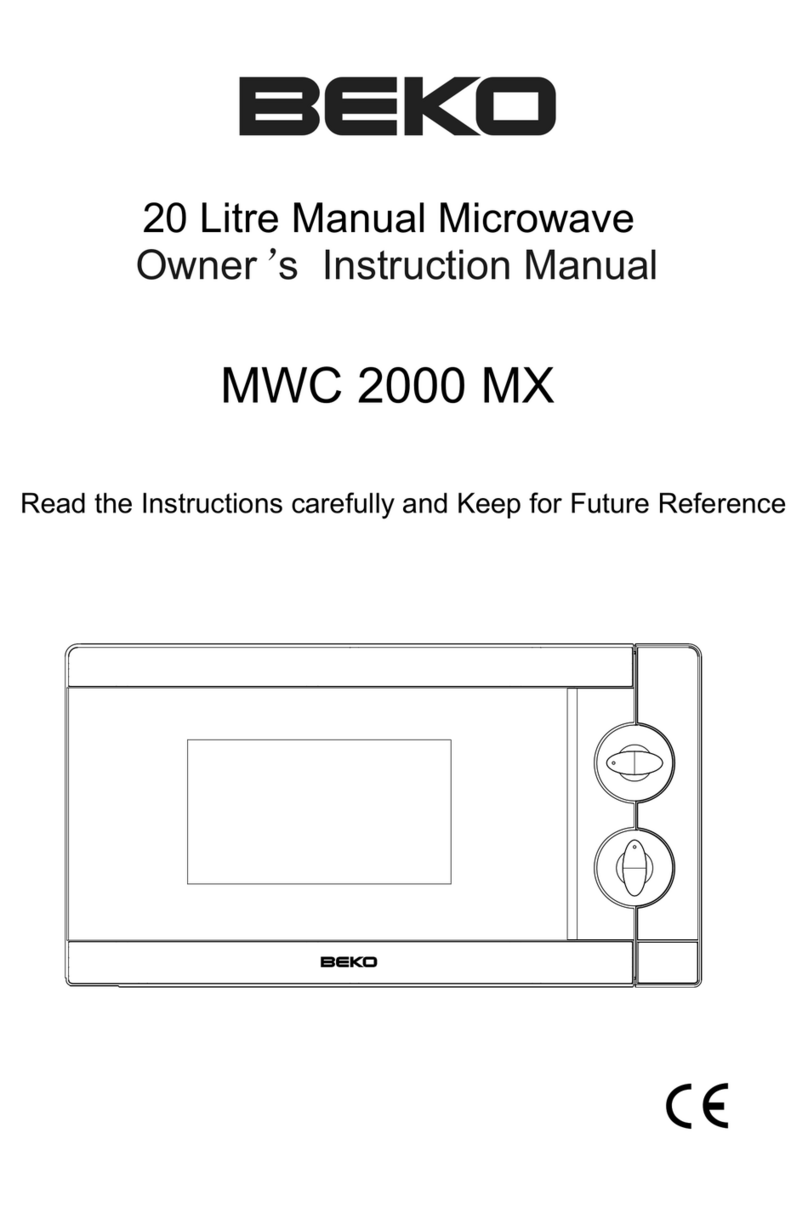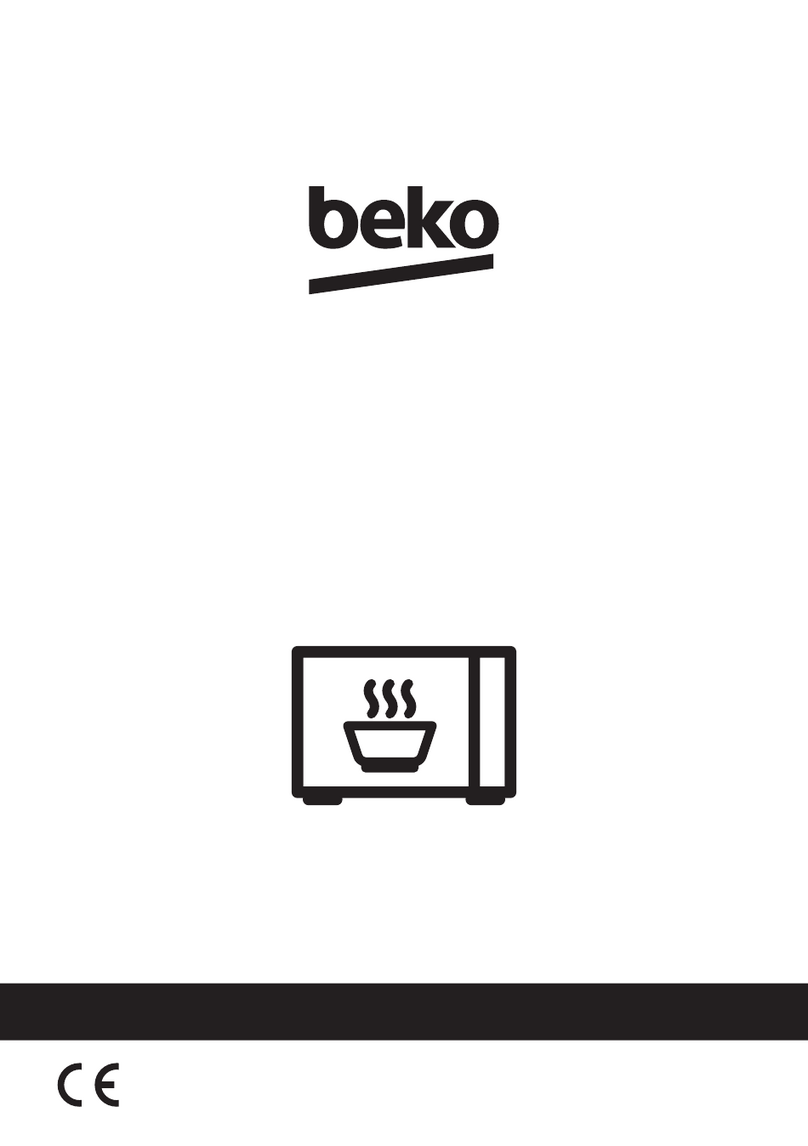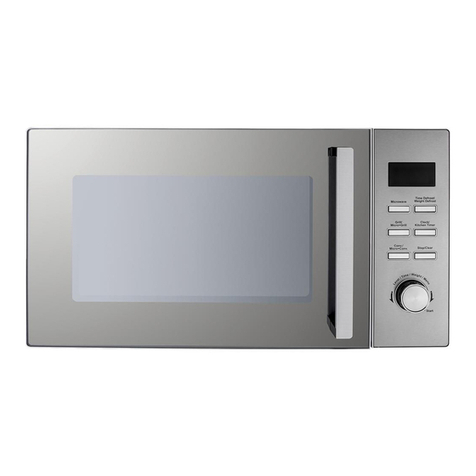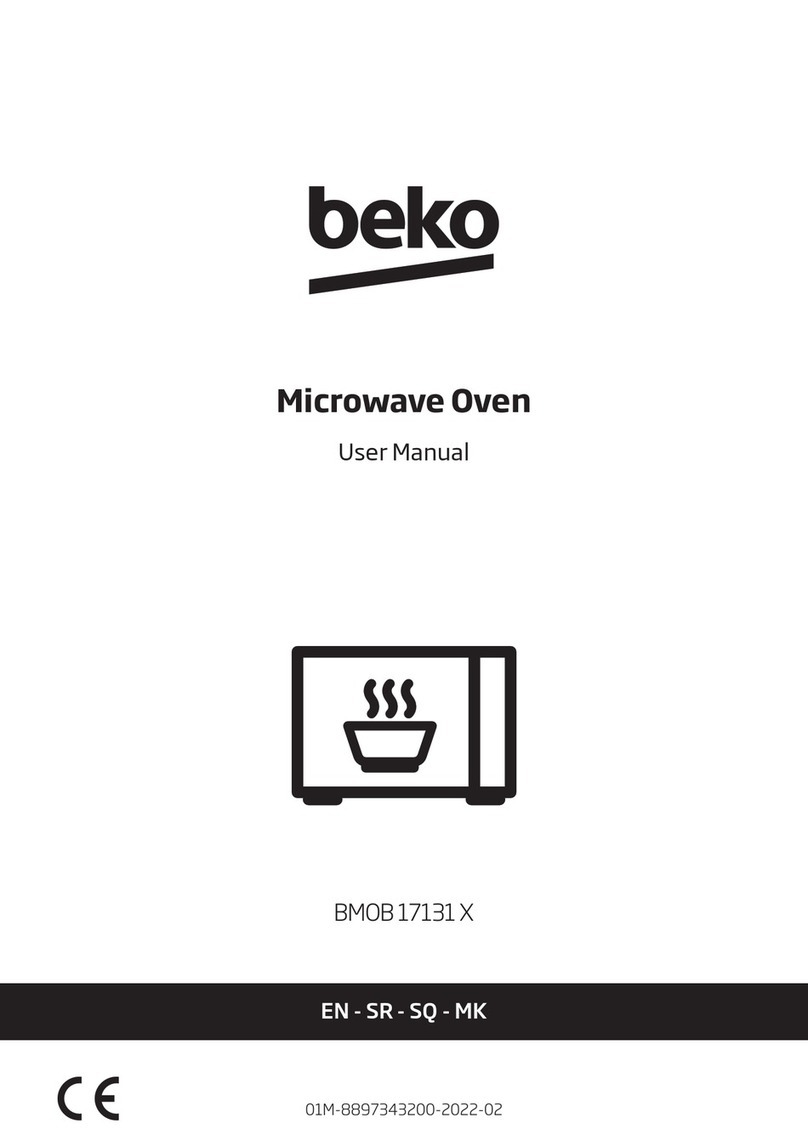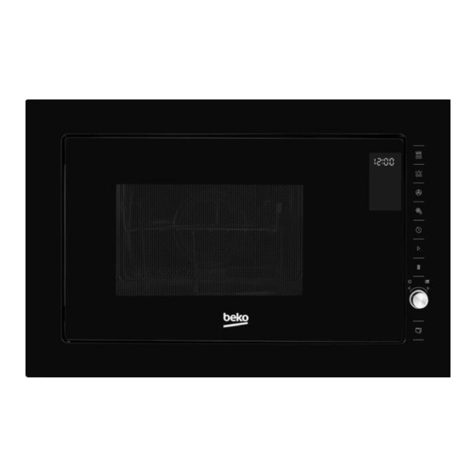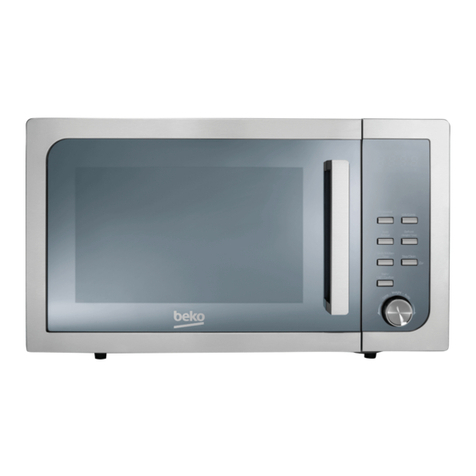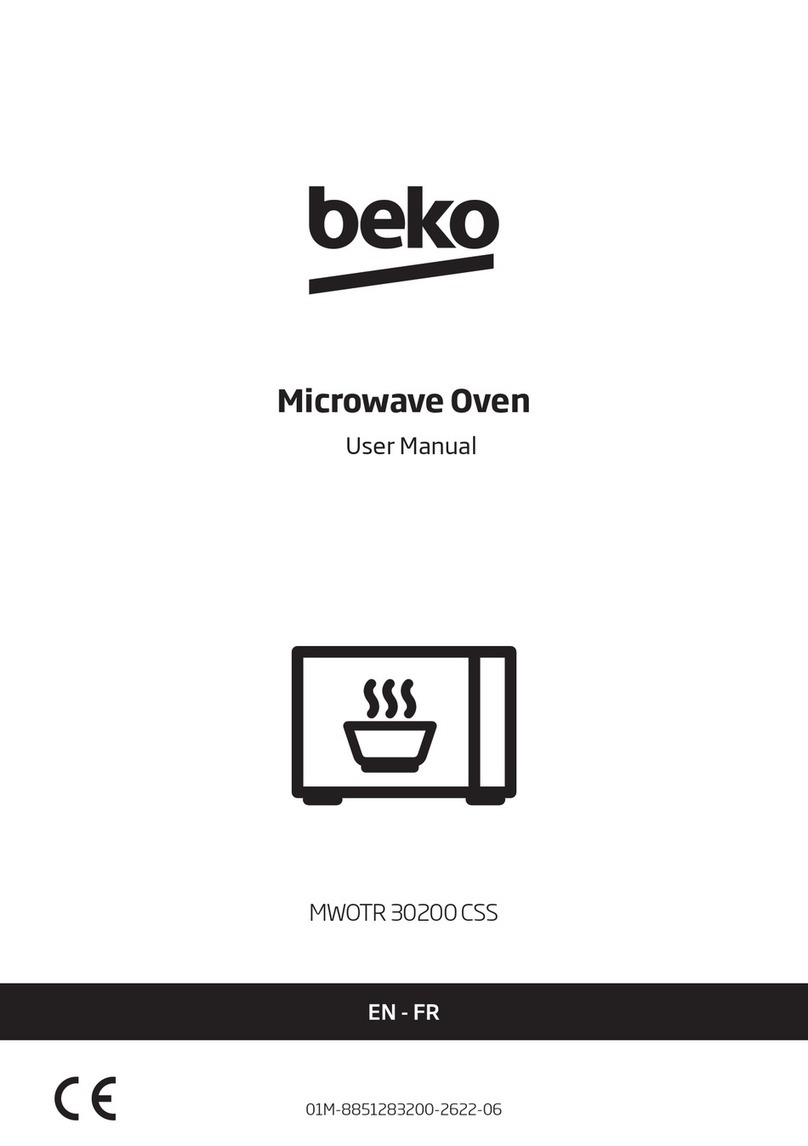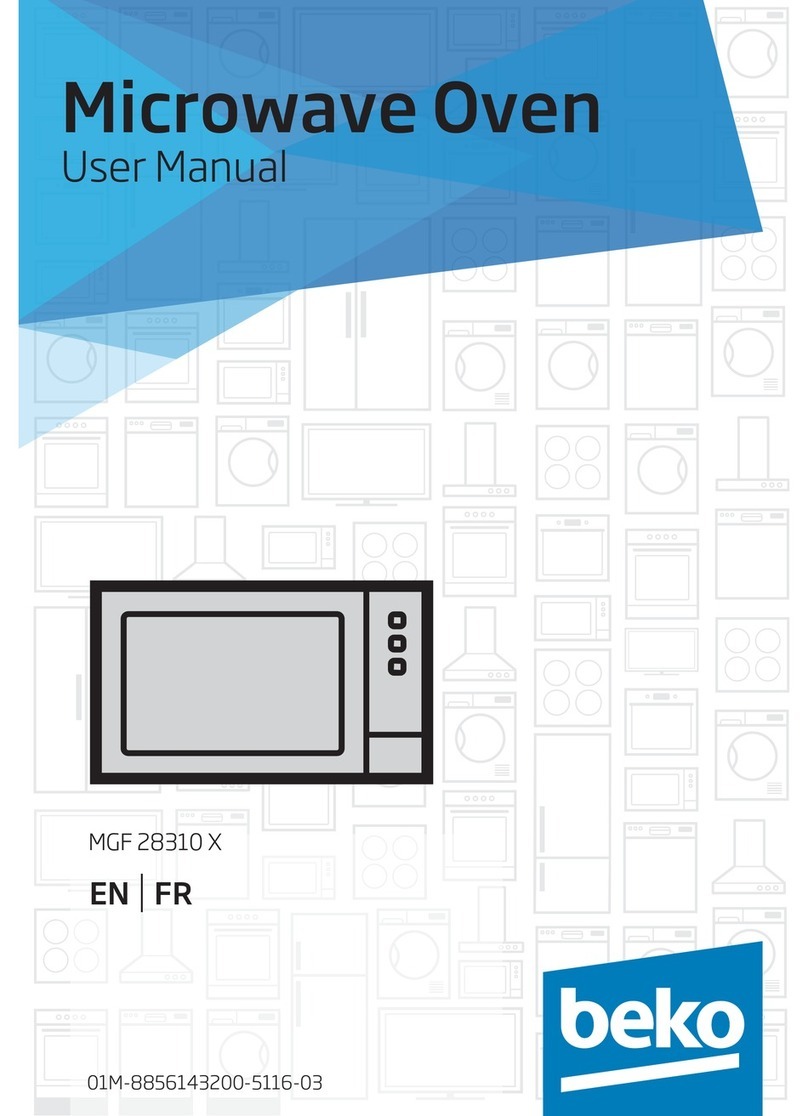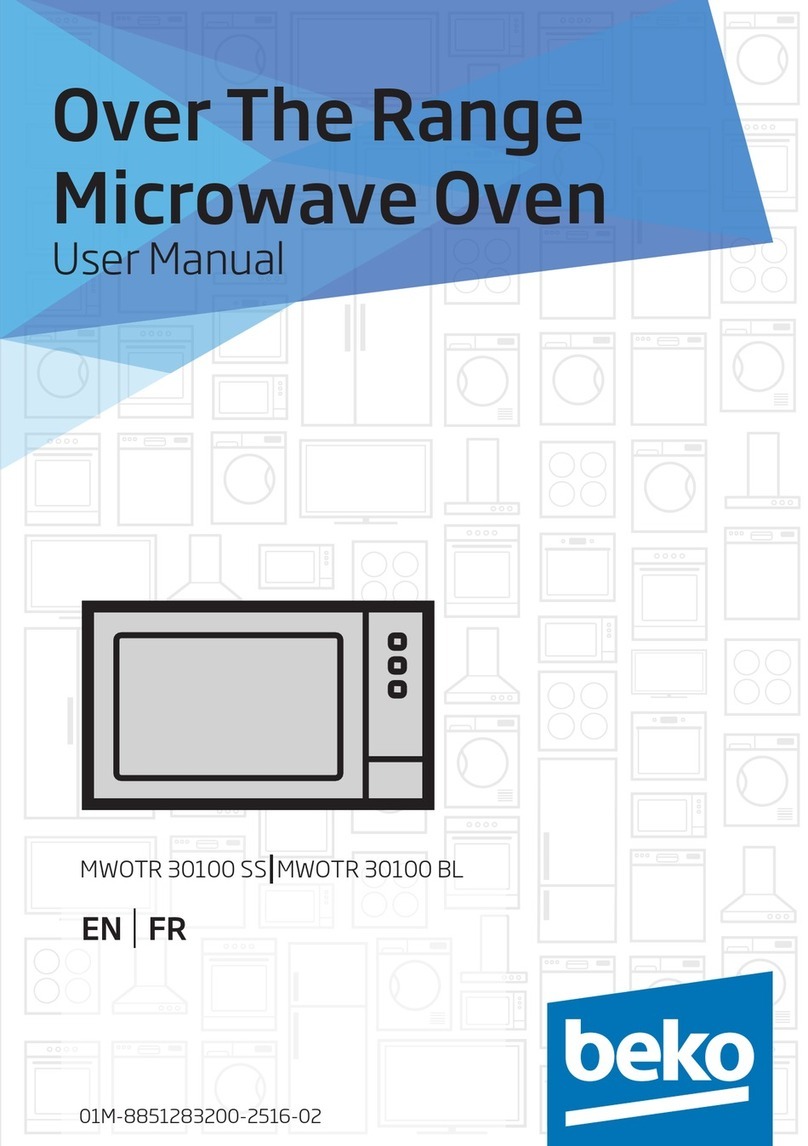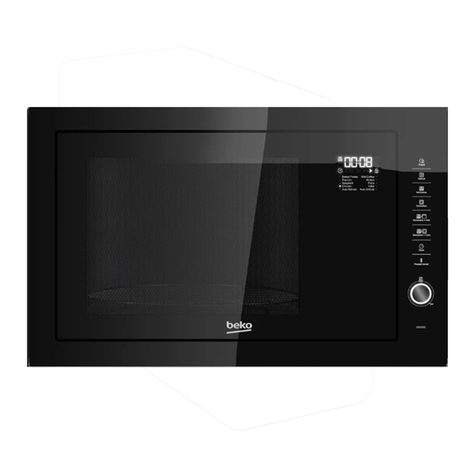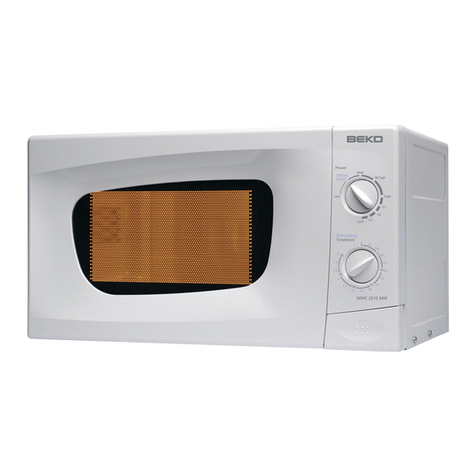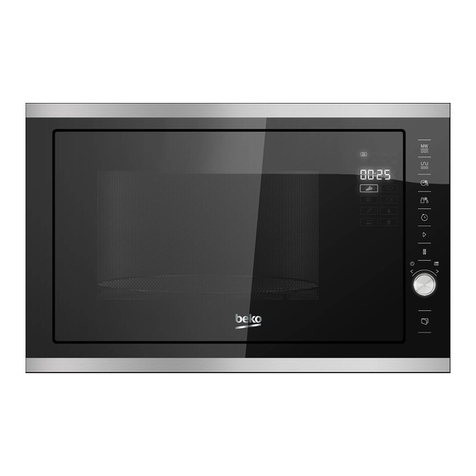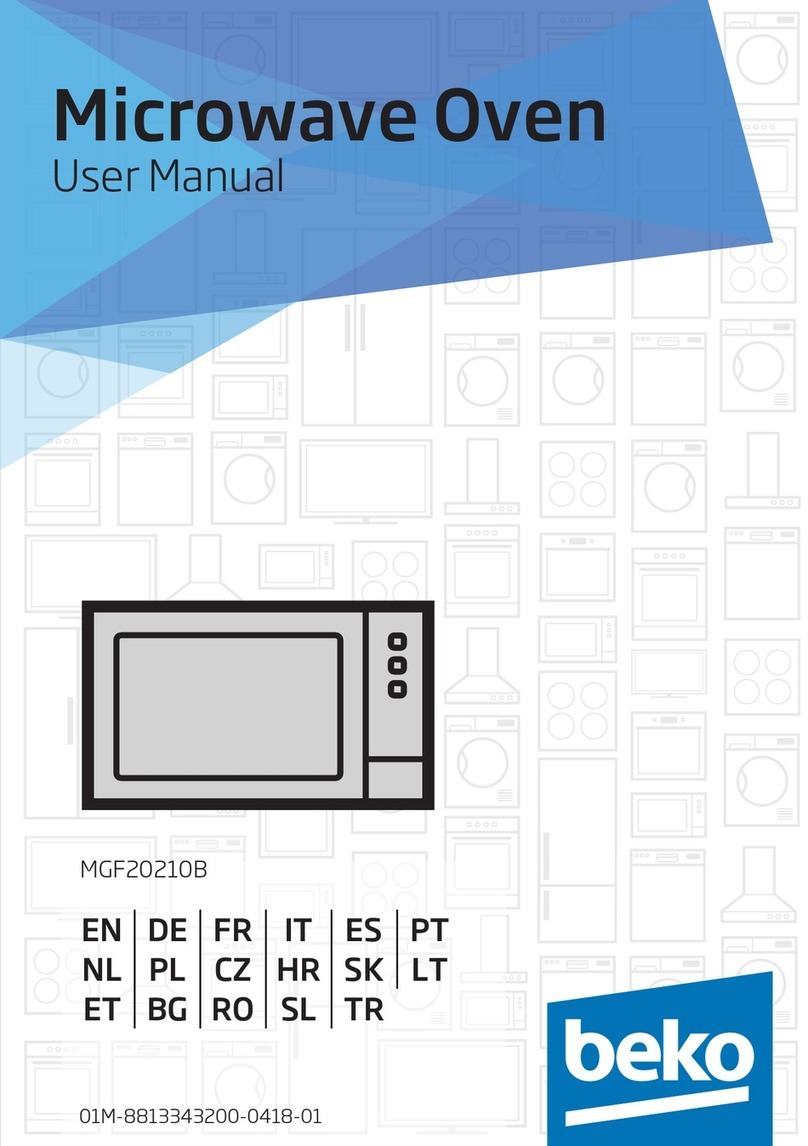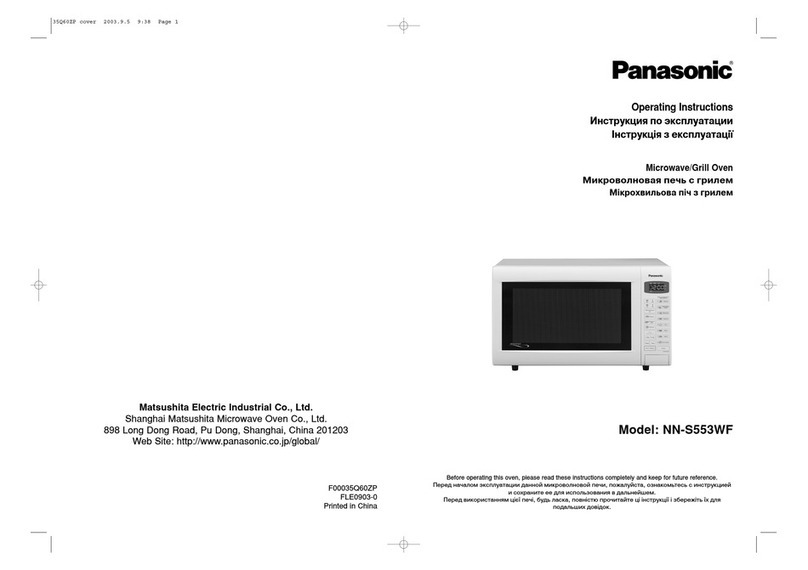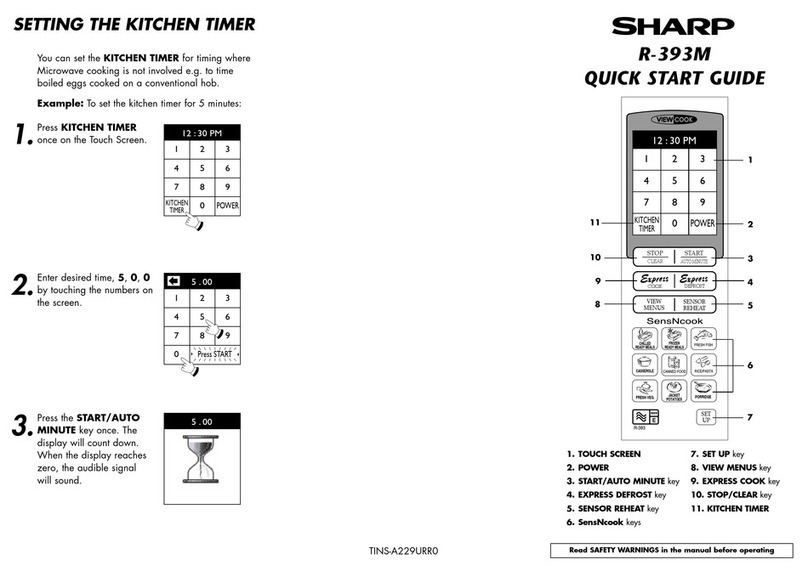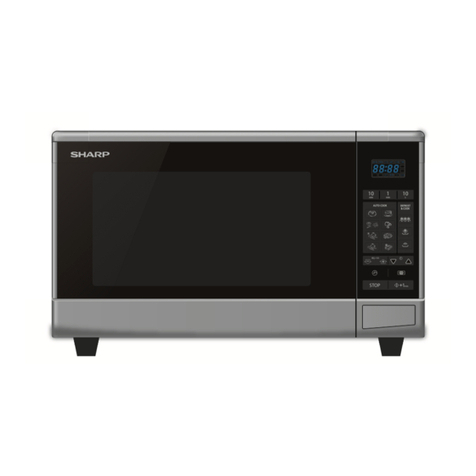
Microwave Oven / User Manual 9 / EN
Cleaning and user maintenance
procedures should not be per-
formed by children unless they
are controlled by their elders.
•Danger of choking! Keep all the
packaging materials away from
children.
•Due to excessive heat that arises
in grill and combination modes,
children should only be allowed
to use these modes under su-
pervision of an adult.
•Keep the product and its power
cable so that they are inacces-
sible by children under 8 years
old.
•Do not cook food directly on the
glass tray. Put the food in / on
appropriate kitchen utensils be-
fore placing them in the oven.
•Metallic containers for food and
beverages are not allowed dur-
ing microwave cooking. Other-
wise, sparking may occur.
•This product is not designed
to be built-in. Do not place the
product in a cabinet or box while
it is in use.
1 Important safety and environmental
instructions
1.2 Compliance with the WEEE
Directive and Disposing of the
Waste Product:
This product complies with EU WEEE Directive
(2012/19/EU). This product bears a classification
symbol for waste electrical and electronic equip-
ment (WEEE).
This symbol indicates that this product
shall not be disposed with other
household wastes at the end of its ser-
vice life. Used device must be returned
to offical collection point for recycling
of electrical and electronic devices. To find these
collection systems please contact to your local au-
thorities or retailer where the product was pu-
chased. Each household performs important role
in recovering and recycling of old appliance.
Appropriate disposal of used appliance helps pre-
vent potential negative consequences for the envi-
ronment and human health.
1.3 Compliance with RoHS
Directive
The product you have purchased complies with EU
RoHS Directive (2011/65/EU). It does not contain
harmful and prohibited materials specified in the
Directive.
1.4 Package information
Packaging materials of the product are
manufactured from recyclable materials
in accordance with our National
Environment Regulations. Do not dis-
pose of the packaging materials together with the
domestic or other wastes. Take them to the pack-
aging material collection points designated by the
local authorities.
